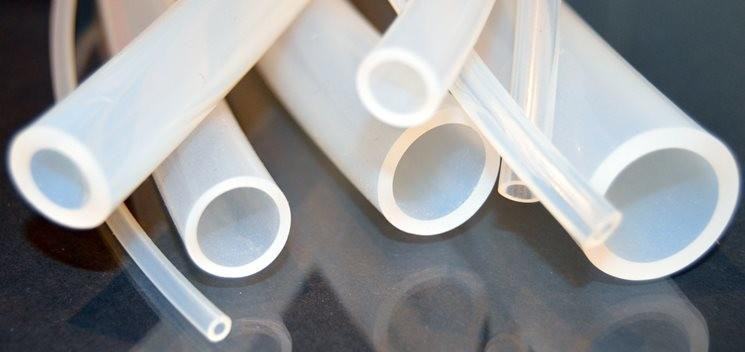Platinum Cured Silicone Transparent Tube, also known as addition cure silicone, is created by reacting a hydride- and a vinyl-function siloxane polymer in the presence of a complex platinum catalyst. It is designed for peristaltic pump and fluid transfer in Pharmaceutical and Biotech applications. Simply put, the two polymers combine to form a larger one, with platinum acting as a bridge between them. A platinum-catalyzed system is composed of two equal-weight silicone elastomer base parts. The platinum catalyst is in one part, and the cross linker is in the other. Because platinum catalyst remains embedded in the rubber without forming any volatile compounds, it eliminates residual peroxide and peroxide by-products.
Platinum's only volatile organic compounds are derived from the degradation of carbon-based side groups on siloxane chains. In order to pass strict requirements that you may find in the automotive and medical industries, platinum compounds will still require a thorough post-cure to remove or lower the overall volatile content in the silicone.
Pros
- Better tensile and tear strength properties
- Has no by-products, making them more favourable for medical and automotive manufacturers
Cons
- HIgher Price: Catalyst costs are higher than peroxide cure systems, which will most likely be reflected in the masking component's price
- Harder to process due to high-temperature cure requirements
Peroxide-Cured Silicone
Peroxide-cured systems (also known as free radical cured systems) use free radicals generated by organic peroxide to decompose at high temperatures, triggering a crosslinking reaction. Peroxide Cured Silicone Transparent Tube is designed for General, non critical applications having good flexibility and resiliency.
The problem with peroxide curing is that it can produce by products such as volatile organic compounds (VOCs). The majority of the VOC content is made up of residual peroxide and peroxide by-products. When it comes to masking, companies like Echo Engineering will use a high-heat post-curing system to speed up and remove residue, odour, and toxins while also improving the material's properties. It is also necessary to prevent acidic-catalyzed rubber decomposition.
Pros
- Price: Raw ingredients are typically going to be cheaper, making this process more common due to lower costs
- Longer shelf life
Cons
- Offers less control over cure rates and crosslink distribution, resulting in less consistency in appearance (compared to platinum-cured)
- Higher surface tack, resulting in dirt/dust pick-up (depending on the environment)
- Post cure of four+ hours required to remove cure system residuals
Conclusion
As previously stated, masking is more than just selecting a cap or plug. The best Rubber Products Manufacturers entails designing, engineering, material selection, chemistry, quality control, and a variety of other tasks. If you work in an industry with strict regulations, you must ensure that your masking provider understands your needs. When it comes to silicone, we know what we're talking about.
Most businesses attempt to avoid it because it has always been that way. This is a result of years and years of misinformation. Silicone Sheet from Rekson is the top option for masking during high-temperature coating processes as it's one of the very few materials that can produce an effective seal and withstand extreme temperatures, which ensures uniform physical properties of the sheets.
Source of Medium:

